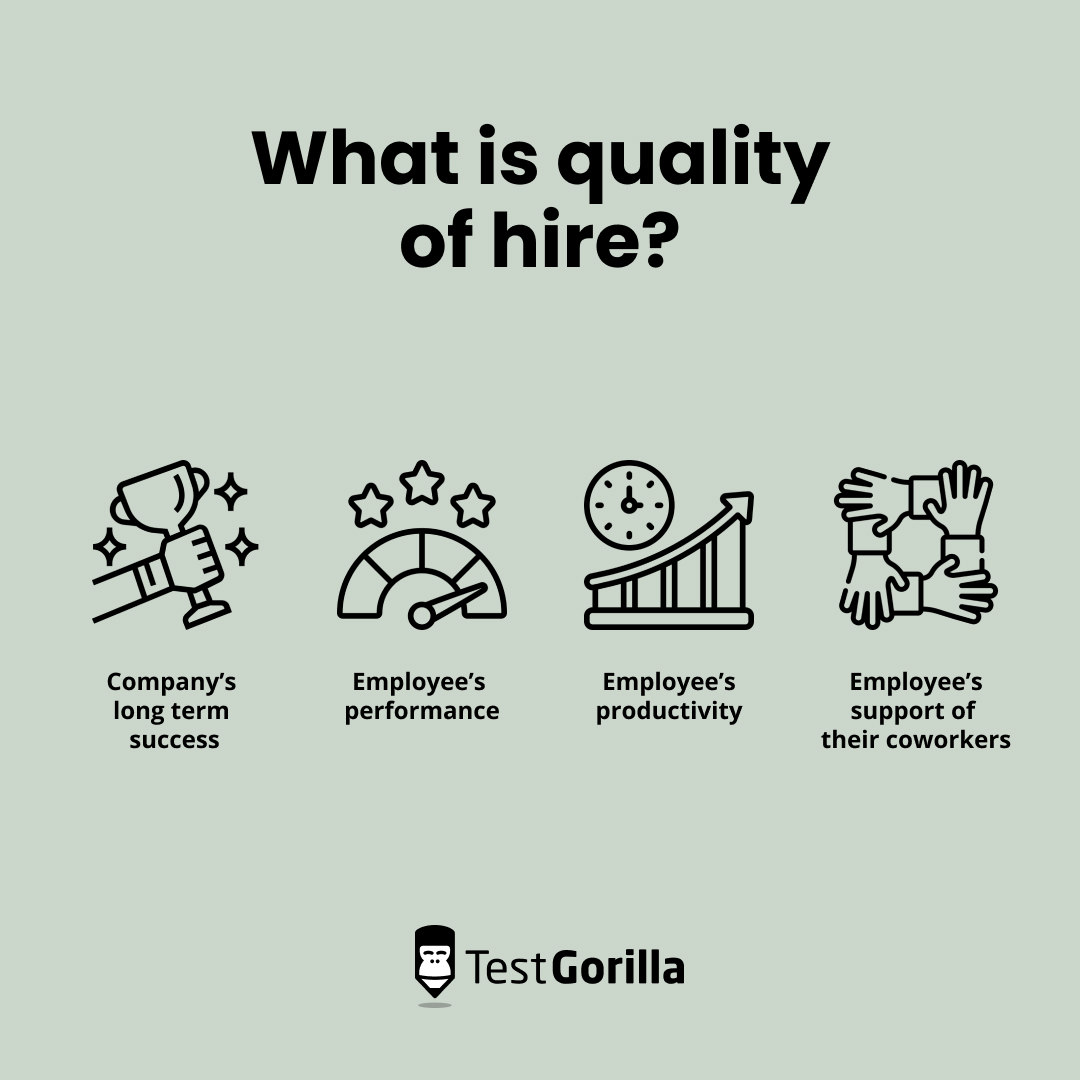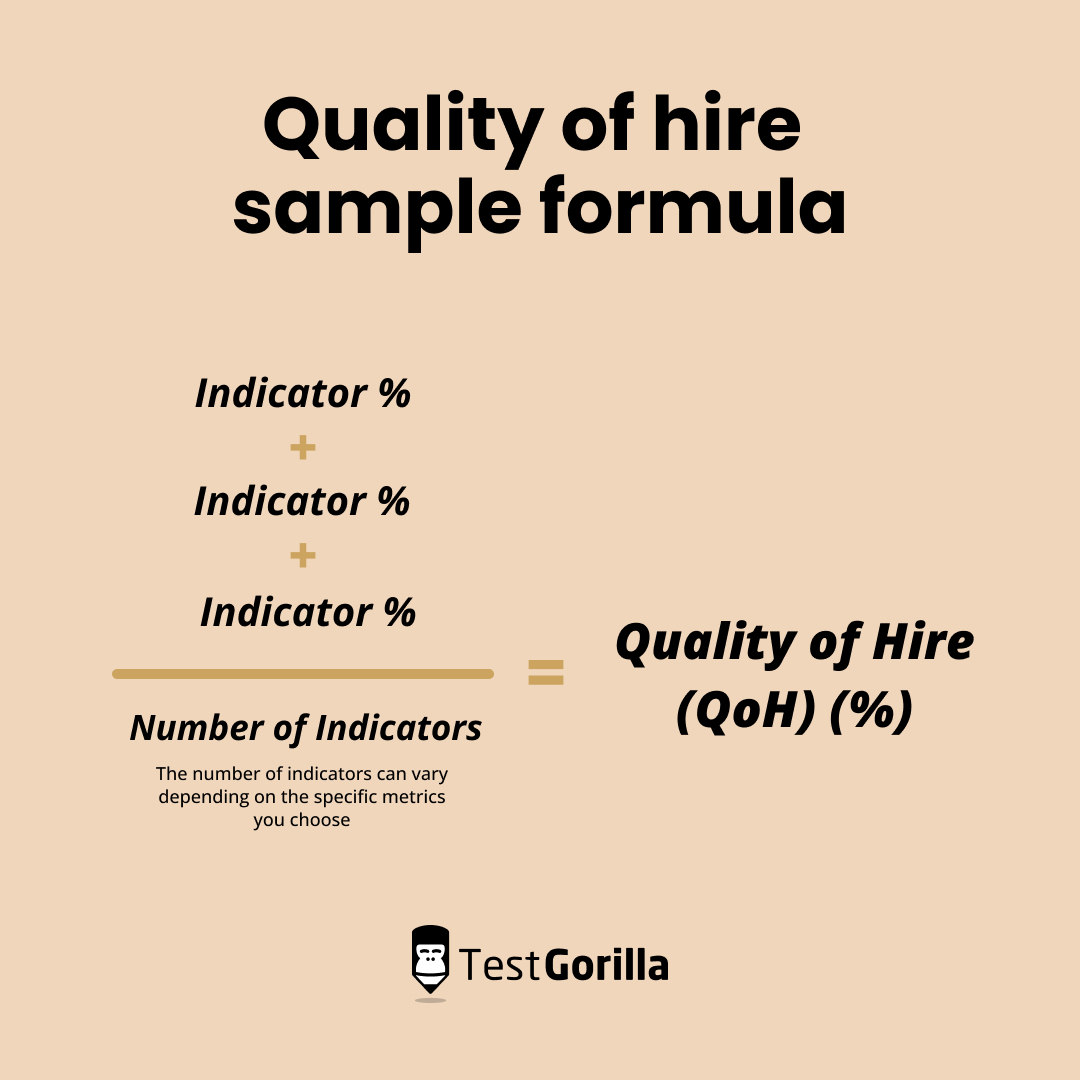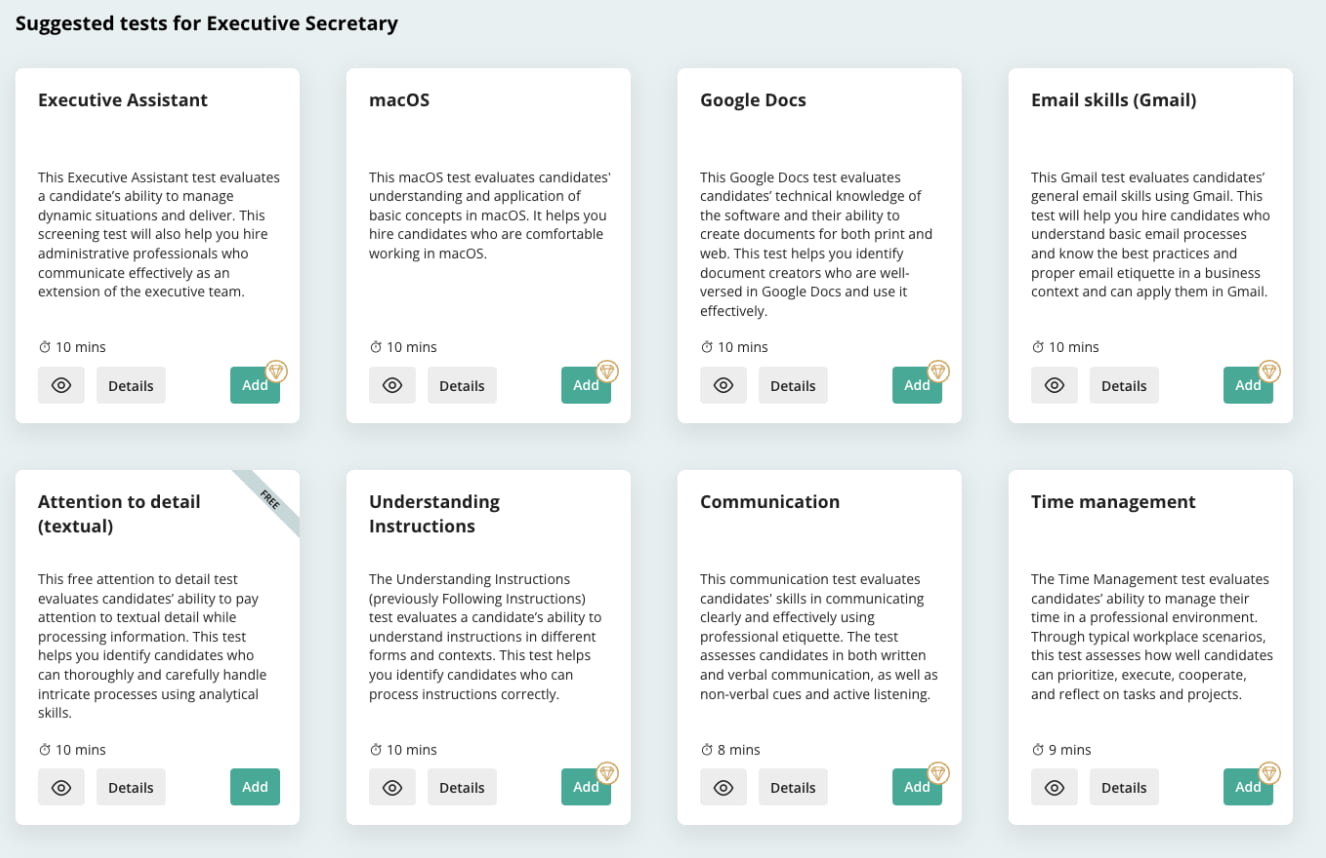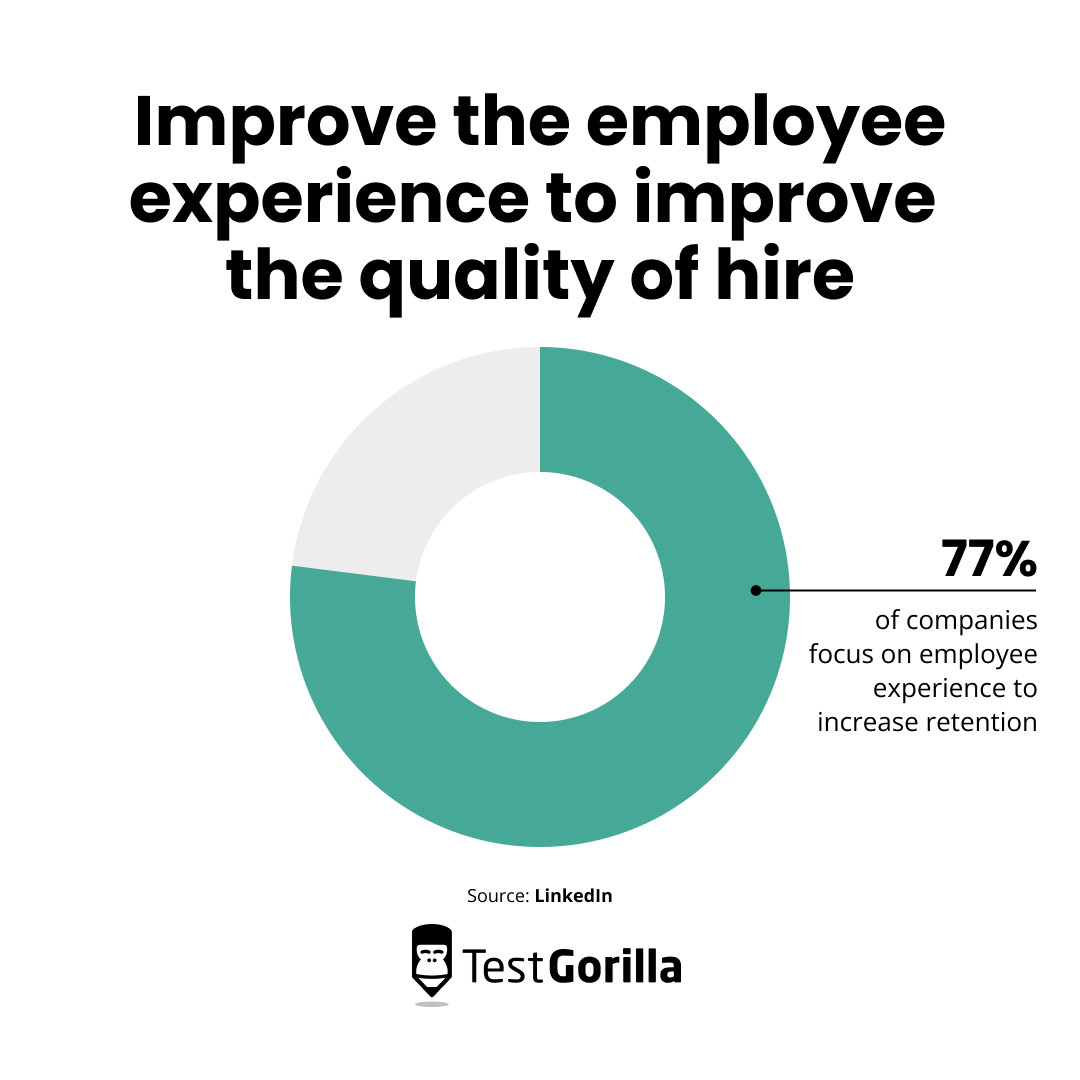Did you know top-performing employees generate 400 percent more output [1] than your average employee?
This statistic sounds great but comes with a downside — one in five high-performing employees will likely leave the company in the next six months.
Often, an employee leaving is just a natural cycle for high-performers who are leaving the company to take a different opportunity and there isn’t much you can do to prevent it.
Sure, you can (and will) work on your employee experience, onboarding process, and developmental programs to keep the employees happy and in your company, but that won’t completely solve the problem of high-performers leaving.
However, there is something you can do to prepare for the departure of your best employees: finding new talent that will perform at a high level. This leads us to a term you need to understand if you want to prioritize the recruitment of high-performing individuals — quality of hire (QoH).
Table of contents
What is quality of hire?
Quality of hire refers to the contribution a new hire adds to the company. In other words, it’s about quantifying the value a new employee will create once onboarded. Value is usually measured through one of the following:
The company’s long term success
The employee’s performance
The employee’s productivity
The employee’s support of their coworkers
Mirae Lee, Senior Talent Acquisition Specialist at TestGorilla, believes that ensuring quality of hire is all about being intentional during the interview process.
"Every piece of information gathered during the interviews should be aligned with how the company measures the performance of its employees," Mirae explains.
This approach helps with hiring success and finding the best candidates who are a good fit for the company.
Why is quality of hire important and why hiring managers should care
Quality of hire is a crucial metric for businesses because it measures the value new employees bring to the organization.
A high QoH indicates that new hires are well-suited for their roles, perform at a high level, and contribute significantly to the company's success. On the other hand, a low QoH suggests that new hires struggle to meet expectations, leading to productivity losses, increased turnover, and higher costs.
Here's a closer look at why hiring managers should consider candidate quality.
1. It helps enhance productivity and performance
When you hire high-quality talent, you gain employees who can quickly make significant contributions to their teams. These individuals possess the skills, knowledge, and experience necessary to excel in their roles, resulting in increased productivity, improved efficiency, and better outcomes.
2. It can reduce turnover and retention costs
High-quality hires are more likely to be satisfied with their jobs and feel engaged in their work. This leads to lower employee turnover rates, which saves companies significant costs associated with recruitment, training, and lost productivity.
3. It can help improve company culture and morale
A workforce composed of high-quality individuals fosters a positive and productive work environment. Employees who feel valued, respected, and challenged are more likely to be engaged and motivated, contributing to a more collaborative and supportive company culture.
4. It can foster innovation in the workplace
When companies hire talented and diverse individuals, they bring fresh perspectives, new ideas, and innovative approaches to problem-solving. This diversity of thought in the workplace can lead to breakthrough innovations, improved decision-making, and a competitive advantage in the marketplace.
5. It helps promote customer satisfaction and a positive brand image
High-quality employees often have a direct impact on customer satisfaction. When employees are knowledgeable, helpful, and passionate about their work, they create positive customer experiences that enhance the company's reputation and brand image.
In short, investing in quality of hire is an investment in the long-term growth and sustainability of your organization.
Can you measure quality of hire?
Quality of hire, by definition, is a qualitative metric. This means it’s data “that approximates and characterizes.” It can be difficult to quantify qualitative results because they don’t have associated concrete metrics. Instead, you'll have to track metrics like turnover, performance, promotions, and engagement, which means that it takes a longer period of time to assess quality of hire.
In addition, quality of hire can be subjective.
"Quality of hire is a topic that has been discussed in the industry for nearly a decade but it has remained a challenging metric to implement in each company because the definition of good hire varies per company as well," shares Mirae Lee.
Nadia Vatalidis, Head of People and Culture at TestGorilla, explains how the company embraces quality of hire in a more holistic way:
"At TestGorilla, quality of hire is a holistic term that currently encompasses the entire hiring process, candidate experience, and time to hire.
We consider the following questions when we want to measure it:
1. What is our average time to hire and how can we improve it?
2. What touch points do we want to create for our candidates during the hiring process?
3. What information is accessible to candidates vs what they require to have a fair, inclusive and equitable hiring process experience?
4. Which best practices are we utilizing to ensure remove any bias and assumption from our process?
5. Which efficiencies can we create in our talent acquisition process, to ensure we can focus on engagement and not administrative burden.
6. Most importantly: how can we continue to align with our value of "putting talent first"?
Currently, the weighing system for each of these items to create one metric for QoH is still in the works to make it more accurately representative of our definition of quality of hire in the organization."
Quality of hire metrics
Even though you can't measure quality of hire directly, there are metrics (also known as indicators) you can use to get an idea of where you stand and to work on improving.
Most companies use the following three metrics as a proxy for measuring quality of hire:
1. New hire performance metric
Employee performance assesses a new hire's productivity and their ability to meet or exceed job expectations. It can be measured using performance reviews, goal achievement rates, and customer feedback.
2. Employee retention rate
This metric tracks the percentage of new hires who remain with the company after a certain period, typically one year. A high retention rate indicates that the company is hiring well and that its employees are satisfied with their jobs.
3. Hiring manager satisfaction ratings
Hiring manager satisfaction ratings are a valuable tool for businesses to assess the effectiveness of their hiring process and the quality of their hires. You can measure this through surveys or interviews with hiring managers. You can ask for feedback on the quality of candidates, the efficiency of the hiring process, and the overall support provided by the recruitment team.
4. Employee engagement
This metric measures the new hire's level of involvement and enthusiasm for their work. You can assess this metric through surveys, interviews, and observations of employee behavior.
5. Time-to-productivity
Also known as ramp-up time, this metric measures the amount of time it takes for a new hire to become fully productive in their role. A shorter time-to-productivity indicates that the company is effectively onboarding and training its new employee.
According to a Global Recruiting Trends report by LinkedIn, the three most common metrics that most companies use in measuring quality of hire are the first three metrics we've listed above:
New hire performance
Employee retention and turnover rate
Hiring manager satisfaction ratings
Some other HR metrics that can help out as proxies for measuring quality of hire are:
Cost per hire
Recruiting yield metrics
Time to fill
Source of hire
Offer acceptance rate
360 degrees assessments
Quality of hire sample formula
To calculate quality of hire, here's a sample formula to help you get started:
Quality of Hire (QoH) (%) = Indicator % + Indicator % + Indicator % / Number of Indicators
This formula calculates the average percentage scores for each indicator used to measure QoH. The number of indicators can vary depending on the specific metrics you choose.
Example calculation
Let's assume you use three indicators to measure QoH:
JP: Average job performance rating of new hires
RT: Percentage of new hires who accomplish acceptable ramp up time within a certain period (e.g 6 months) (RT)
ER: Average employee retention rate of new hires within a certain period (e.g. one year)
Here's an example of how to calculate QoH using the formula:
JP (90) + RT (85) + ER (90) = 265
265/3 = 88.3
QoH is 88.3
How to improve quality of hire
It's not just enough to measure the quality of your hires. It's equally important to take active steps to enhance the quality of your hires as well. In 2021, about 20% of non-retired adults voluntarily quit their jobs, without being terminated, laid off, or due to the end of a temporary job.
Measuring quality of hire allows you to assess your current situation. But actively working to retain top talent and increase the quality of hire requires an understanding of how to improve your hiring process.There are two important areas to focus on if you want to have an amazing hire: pre-hiring and post-hiring.
Pre-hiring process
In the pre-hiring process, you can help improve quality of hire and find high quality candidates through the following best practices:
Conduct thorough and engaging interviews
Design interview questions that assess both technical skills and cultural add. Engage in active listening, ask probing questions, and provide opportunities for candidates to ask their own questions.
Pro tip from TestGorilla’s talent acquisition team: Challenge your team and ask why we ask for what we ask during the interview. Why are we asking candidates to do a certain assessment? What information are we trying to gather and measure? How could it be aligned to their performance so that you could start to collect rough data points on quality of hire?
Involve hiring managers in the selection process
Actively involve hiring managers in the hiring process, as they have a direct understanding of the role's requirements and can provide valuable insights into candidate suitability.
You can also use tools like:
Talent scorecards, which provide a structured format for your hiring team to use as they assess candidates.
Talent assessments, which provide insight as to a candidate’s skills, alignment with your company’s values, and personality.
Realistic job previews (RJP), which give a candidate a better idea of what to expect in the role—the good and the bad.
You might consider creating RJPs and scorecards internally, but pre-employment assessment tests typically require some outside help. You’ll need the help of subject matter experts (SMEs) to create questions that will predict job success, and you’ll also need a platform through which to administer the test.
At TestGorilla, we offer over 300+ tests created by subject-matter experts to help you identify the best candidates and increase your quality of hire. Here are examples from our test library.
Post-hiring process
The second area where you can improve quality of hire is the post-hiring process.
In the post-hiring process, you can do things like:
Improve the employee experience
This is where, according to Linkedin’s 2020 Global Talent Trends, 77% of companies focus their activities. Most companies recognize the need to improve the employee experience to increase retention rates and create satisfying work environments.
Build an effective onboarding process
The faster an employee can be brought up to speed and begin making a contribution, the more satisfied they’ll be and the more they can contribute.
Create a coaching program for your managers
Each of your managers can be a great resource to help you retain top talent and to aid your employees in their professional development so that they can make increasingly meaningful contributions to the company.
Invest in employee training and development
Provide ongoing learning and development opportunities for new hires to enhance their skills, knowledge, and capabilities. This will help them grow within the organization and contribute more effectively.
Embrace a culture of feedback
Foster a culture of open communication and regular feedback to encourage continuous improvement and employee engagement. Encourage new hires to share their perspectives and suggestions. What we do at TestGorilla is a good example. Mirae Lee shares:
We continuously review feedback from our candidate experience survey and aim to achieve a rolling average of more than 4.2 out of 5 rating in our survey results, which is also currently a key result during Q4 2023. Furthermore, Glassdoor is an indicator that we review and use to make improvements and iterations on our hiring process.
Next, we also look at new team member feedback during onboarding. We believe every single one of our team members can help shape our team member experience and help us design an employee journey where everyone can thrive and belong.”
It will always take time to increase the overall quality of new hires. Your company culture, employee experience, and coaching all play a role in the process.
Get started with skills testing and improve your quality of hire
High-performing employees always start as new talent that you need to nurture so that they can grow into high-performing individuals. But to have those star employees, you need to start by measuring quality of hire and being intentional about finding talented individuals who want to grow.
Your employees are the not-so-secret ingredient in your recipe for a successful company. Make sure you’re only using the best ingredients by using skills tests at the top of the hiring funnel, and optimize your pre- and post-hiring processes to ensure that everything comes out right in the end.
Get started with TestGorilla today.
Source
1. Dessler, G. (2014, November 11). What High Performers Want at Work. Harvard Business Review. Retrieved from https://hbr.org/2014/11/what-high-performers-want-at-work
Related posts
Hire the best candidates with TestGorilla
Create pre-employment assessments in minutes to screen candidates, save time, and hire the best talent.
Latest posts
The best advice in pre-employment testing, in your inbox.
No spam. Unsubscribe at any time.

Hire the best. No bias. No stress.
Our screening tests identify the best candidates and make your hiring decisions faster, easier, and bias-free.
Free resources
This checklist covers key features you should look for when choosing a skills testing platform
This resource will help you develop an onboarding checklist for new hires.
How to assess your candidates' attention to detail.
Learn how to get human resources certified through HRCI or SHRM.
Learn how you can improve the level of talent at your company.
Learn how CapitalT reduced hiring bias with online skills assessments.
Learn how to make the resume process more efficient and more effective.
Improve your hiring strategy with these 7 critical recruitment metrics.
Learn how Sukhi decreased time spent reviewing resumes by 83%!
Hire more efficiently with these hacks that 99% of recruiters aren't using.
Make a business case for diversity and inclusion initiatives with this data.























